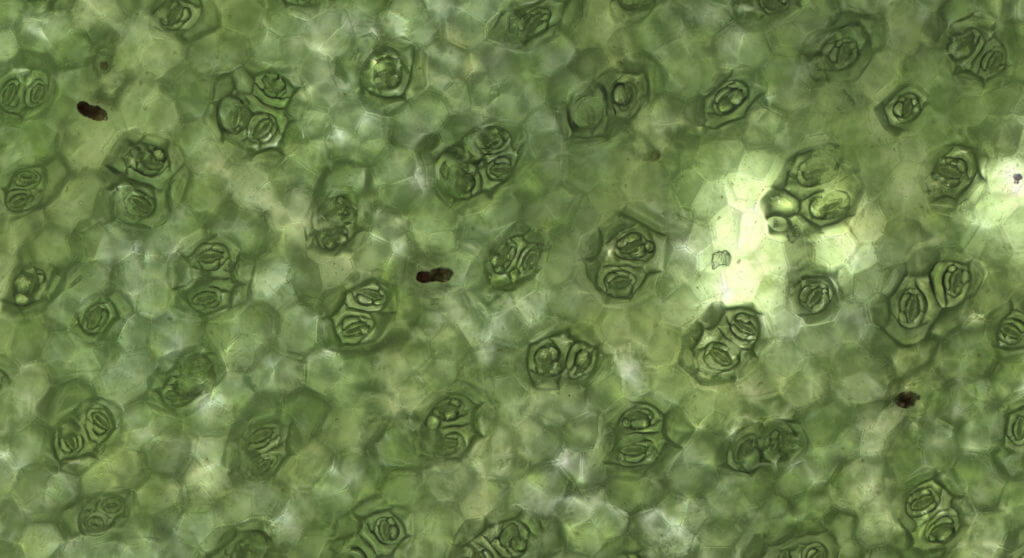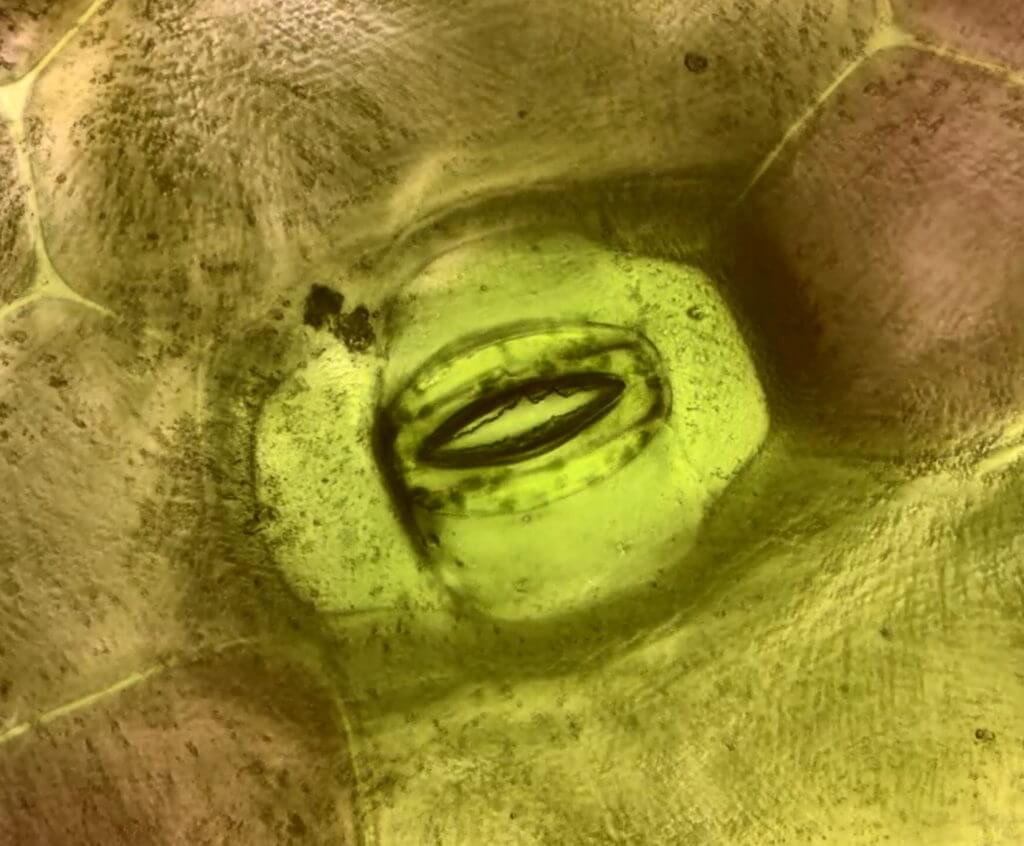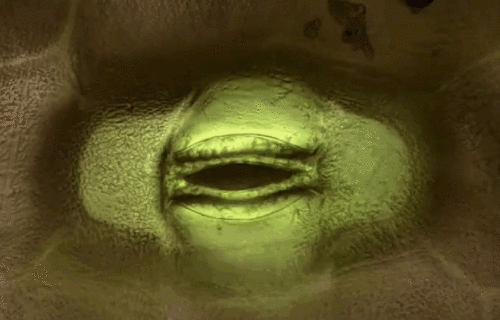SAN DIEGO — It looks like a scene from a horror movie, but captivating new research shows plants “breathing” in close-up detail. Biologists are gaining new insight into the intricate process and providing implications for how to feed the world in the future.
Researchers at the University of California San Diego, funded by the U.S. National Science Foundation (NSF), along with collaborators in Estonia and Finland, show the elusive molecular pathway that plants use to direct their “breathing” of carbon dioxide.
Knowing how plants sense carbon dioxide to signal their “mouths,” or stomata, to open and close in response to changing carbon dioxide levels could allow scientists to produce crops robust enough for a changing environment.

“The researchers hope that harnessing this mechanism could lead to future engineering of plant water use efficiency and carbon intake, critical as atmospheric carbon dioxide concentration continues to increase,” explains Jared Dashoff, National Science Foundation spokesperson, in a statement. “In fact, the researchers have filed a patent and are examining ways to translate their findings into tools for crop breeders and farmers.”
The process becomes clearer on the microscopic level. On the underside of leaves and elsewhere, depending on the plant, are tiny openings called stomata — thousands of them per leaf with variations by plant species.
“Like little castle gates, pairs of cells on the sides of the stomatal pore — known as guard cells — open their central pore to take in the carbon dioxide,” says Dashoff. “However, when stomata are open, the inside of the plant is exposed to the elements and water from the plant is lost into the surrounding air, which can dry out the plant. Plants, therefore, must balance the intake of carbon dioxide with water vapour loss by controlling how long the stomata remain open.”
Adds research leader Julian Schroeder, the Torrey Mesa Research Institute chair in plant science at UC San Diego: “The response to changes is critical for plant growth and regulates how efficient the plant can be in using water, which is important as we see increased drought and rising temperatures.”

(Credit: Douglas Clark)
As the climate changes, both atmospheric carbon dioxide concentration and temperature increase, affecting the balance between carbon dioxide entry and water vapor loss through the stomata. If plants, especially crops like wheat, rice and corn, can’t strike a new balance, they risk drying out, farmers risk losing valuable output, and more people across the world risk going hungry.
Even with advances in agriculture, an NSF-funded study in published in 2021 found that global agricultural productivity over the past 60 years is still 21% lower than it could have been without climate change.
“Scientists have long understood stomata and the balance between carbon dioxide intake and water loss. What they haven’t known, until now, is how plants sense carbon dioxide to signal stomata to open and close in response to changing carbon dioxide levels,” says Dashoff “Knowing this will now enable researchers to edit those signals — so plants can strike the right balance between taking in carbon dioxide versus losing water — and allow scientists and plant breeders to produce crops robust enough for the environment of the future.”
Richard Cyr, an NSF program director who studied plant cell biology prior to joining the agency, adds: “Determining how plants control their stomata under changing CO2 levels creates a different kind of opening — one to new avenues of research and possibilities for addressing societal challenges.”
The research is published in the journal Science Advances.
South West News Service writer Dean Murray contributed to this report.
